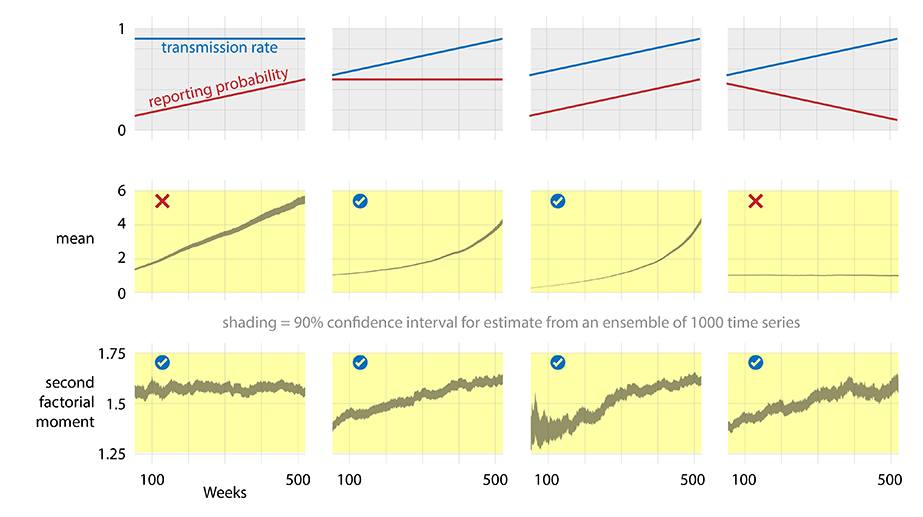Second order statistics such as variance and autocorrelation can in principle provide early warning of disease (re-)emergence. Such statistics can detect the approach to an epidemic threshold, a point beyond which a major outbreak (or epidemic) becomes possible.
However, changes in disease reporting probabilities can produce the same trends in the early warning statistics as changes in transmission rates. In a real detection scenario, it would be essential to be able to distinguish changes in disease monitoring from changes in the actual disease dynamics, for example a change in the frequency of transmission resulting from changing vaccination rates.
In a new paper in Theoretical Ecology, we show that a moving window “normalized second factorial moment” of the number of case reports is one of the statistical indicators that are insensitive to the reporting probability but sensitive to disease transmission rate, and therefore has potential as real-world indicator.
In this simulation study, we demonstrate the ability of this indicator to disentangle a trend of increased reporting from a trend of increased transmission. The performance of the indicator is improved substantially by averaging over many separate estimates on parallel datasets, such as might be provided by multiple cities for the same time period.
The paper, published in Theoretical Ecology, is now available online:
O’Dea, E.B., J.M. Drake. 2018. “Disentangling reporting and disease transmission.” Theoretical Ecology. https://doi.org/10.1007/s12080-018-0390-3

